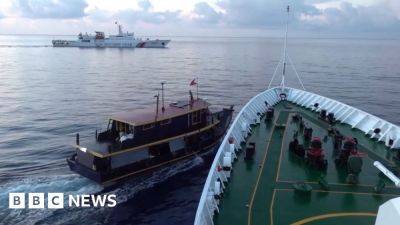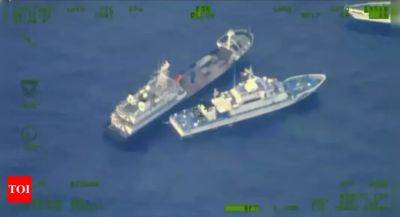Crossing Cultures: How China and Europe mastered the sea
For millennia, China has embraced the sea as a vital conduit for trade and cultural exchange.
The Maritime Silk Road, a network of maritime routes, was the lifeblood of this connectivity, enabling the transport of valuable goods, such as tea and silk, to far-flung corners of the globe.
Navigating treacherous waters was a perilous endeavor, especially for vessels laden with heavy cargo. Chinese shipbuilders devised a revolutionary solution: the Fu Ship. These vessels introduced watertight-bulkhead technology, enhancing their resilience against storms and rough seas.
"In ancient times, on the Fujian coast, our ancestors lived on the sea and by the sea,” says Zhang Guohui, a Fu ship model maker. “Ships were basically the source of their livelihood, so they were constantly evolving, from the earliest rafts and canoes to Fu Ships, designed for long voyages.”
Archaeological evidence reveals that as early as the Song Dynasty (10th to 13th centuries), merchant ships employed bulkheads, a practice still employed in modern shipbuilding. These partitions not only prevented complete flooding in case of an accident but also facilitated cargo storage and stability.
Guohui, explains that the name "Fu Ship" partly derives from "Fujian," the region where these ships were made, and the auspicious meaning of the Chinese character "Fu," signifying "good luck".
While modern steel-hulled vessels replaced the traditional Fu Ships, Lin Peizong and his team in 2020 undertook the remarkable task of constructing a full-scale replica of a Ming Dynasty-era Fu Ship. This endeavour rekindled the spirit of ancient maritime exploration.
"I've been a sailor for nine years. I inherited the technique of creating watertight compartments. For those of us who live on the sea, the Fu Ships are our home. My dream is to sail the Maritime Silk Road with a Fu Ship," Peizong says.
If the Fu Ship took China to the world, the Nao Victoria quite literally went around it.
In 1519, Portuguese explorer Ferdinand Magellan embarked on arguably the greatest sea voyage ever undertaken. Setting sail from Seville in a five-ship flotilla, his mission on behalf of the Spanish crown was to find a western route to the







